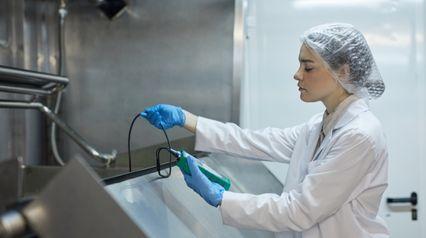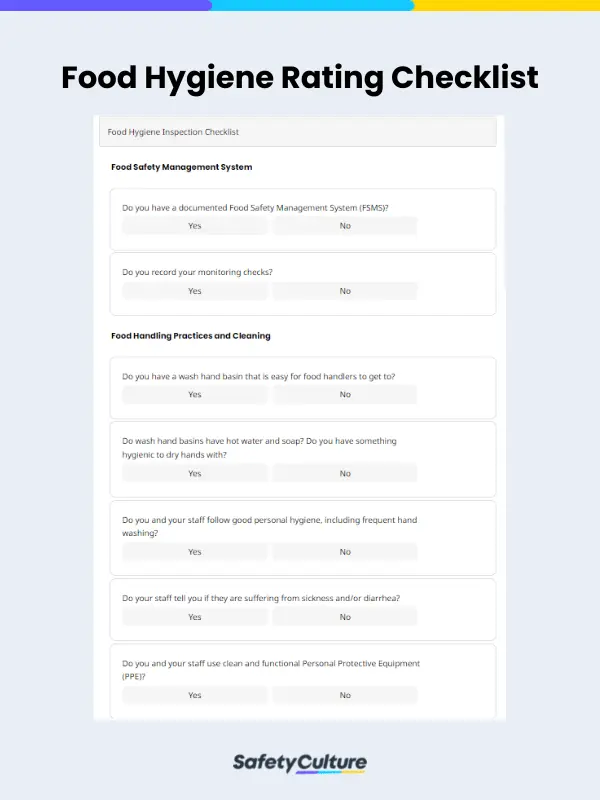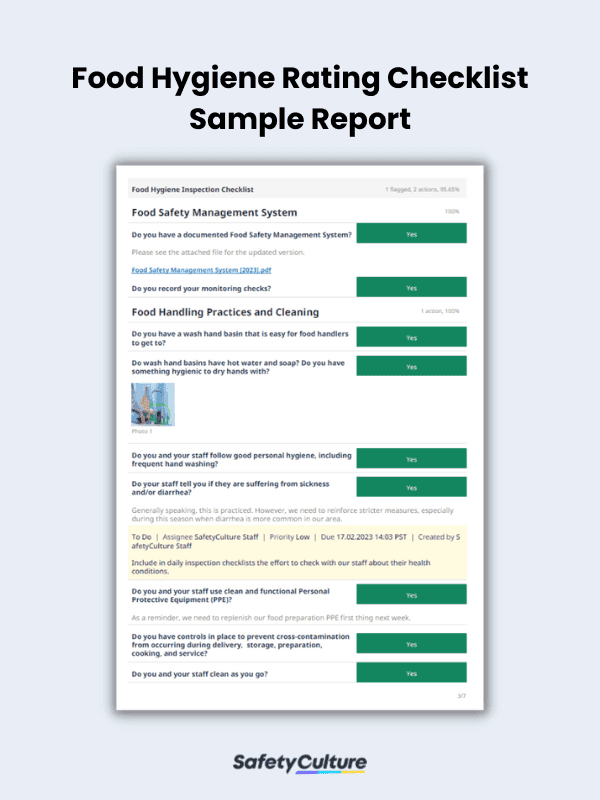What is a Food Hygiene Rating Checklist?
A food hygiene rating checklist is a tool used to assess the safety and quality of food products and services. It’s used to identify potential risks and hazards associated with food production and consumption. This checklist is designed to help food businesses and consumers make informed decisions about the safety of the food they produce and purchase.
Benefits of Using a Checklist
By having a checklist in place, businesses can ensure that they are following the necessary food safety protocols. This can help to reduce the risk of foodborne illnesses and other health risks associated with consuming contaminated food.
Another benefit of a food hygiene rating checklist is that it can help businesses improve their overall food hygiene and safety standards. Using checklists and templates during audits and inspections allows them to identify areas where they need to make improvements and implement corrective actions.
Finally, a food hygiene rating checklist can help businesses to save money. Once checklists and templates are completed and exported into reports, they can identify areas where they can make cost-saving changes and reduce their overall food safety costs through proactive and preventive measures.
Types
Five-Star Rating System
As the most common type, this system is used to rate the overall hygiene of a food establishment. The rating is based on the cleanliness of the premises, the food handling practices, and the overall safety of the food being prepared and produced. It can range from one star, the lowest rating, to five stars, the highest rating.
Hazard Analysis and Critical Control Points (HACCP) System
This system is used to identify potential food safety hazards and to develop control measures to prevent them from occurring. The HACCP system is used to assess the safety of food production processes and to ensure that food is safe for consumption.
Food Hygiene Rating Scheme (FHRS)
Used to assess the hygiene standards of food businesses in the United Kingdom (England and Wales), the FHRS system’s ratings can range from zero as the lowest rating to five as the highest. Another version of the FHRS is the Food Hygiene Information Scheme (FHIS). It’s based on a scale of 0 to 4 and is currently used in Scotland and Northern Ireland.
Example of a Food Hygiene Rating Report
Below is a visual sample of what a food hygiene rating report can look like:
How to Use and What to Include in a Food Hygiene Rating Checklist
To ensure you won’t miss any detail during your food hygiene audits and inspections, your checklist must include the following elements and sections:
- Title Page – Allot this page for the basic details of your inspection, including the date, name of the inspector, and where it took place.
- Inspection Checklist – Answer Yes-No questions about your current food hygiene practices. You can also include notes and attachments where you deem fit to provide further details and/or flag issues. This is usually divided into different sections:
- FSMS
- Food Handling Practices and Cleaning
- Temperature Control
- Training
- Physical Business Structure
- Completion and Sign-off – Don’t forget to conclude your checklist with comments and insights you might have during or after the inspection. Also, put the name and signature of the inspector for proper documentation.
FAQs About Food Hygiene Rating Checklists
Food hygiene rating checklists are an invaluable tool for anyone involved in the food industry. Restaurants, cafes, caterers, food manufacturers, and food retailers can all benefit from using this checklist. It can help them ensure that their food is safe to eat and that their premises are clean and hygienic.
This checklist can also be used by food inspectors and health and safety officers. They can use it to assess the hygiene standards of food businesses and ensure that they are meeting the necessary regulations. Finally, food hygiene rating checklists can also be helpful to consumers so that they can make informed decisions about where to eat or buy food.
Since food hygiene inspections are typically conducted every 6 months, especially for high-risk businesses, using food hygiene checklists can be done as often when doing internal checks and audits. This way, food businesses can prepare ahead of time, even before the official inspection day comes.
One mistake is when the checklist isn’t properly updated or maintained. This can lead to incorrect ratings being given to food establishments and customers being misled about the safety of the food they are consuming.
Another example is when inspectors using this checklist don’t add further details to explain or describe their findings. This can make the food business miss out on opportunities to improve certain aspects of its food hygiene practices.




